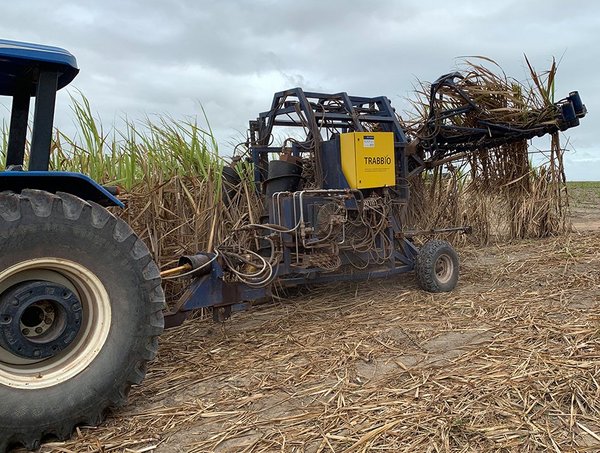 Read this article in French
Read this article in French- Share this article
- Subscribe to our newsletter
New business models for Brazilian agribusinesses
At approximately 715 million tonnes a year, Brazil is the largest sugar producer world-wide. According to Professor Sabine Schlüter of TH Köln’s Institute for Technology and Resources Management in the Tropics and Subtropics (ITT) in Germany, every processed tonne of sugar cane leaves behind around 150 to 300 kilogrammes of crushed, frayed canes, so-called bagasse. No other cultivated plant has so much residual biomass, Schlüter notes. “In the majority of the sugar cane processing businesses, it is inefficiently burnt up in the sugar and alcohol manufacturing process.
In order to make further and higher-value use of the bagasse, the entire process from harvesting on had to be newly conceived. That was up to us,” explains the scientist, who heads an international project on new harvesting methods and processes in the sugar cane industry. In this context, the university is cooperating with a wide range of Brazilian and German partners.
A harvesting machine as the basis for higher-value use
In previous projects, the university had already developed a harvesting machine which is above all suitable for smallholdings. So far, the latter have been burning down their fields in a controlled process in order to remove the plant’s leaves, which have sharp edges. They then harvest the sugar cane proper with the machete.
As an alternative to the manual approach, heavy harvesters are employed. These efficient machines break up the sugar canes, which simplifies logistics in the highly mechanised harvest, but also bears some disadvantages. “Our machine works in a different way. The sugar cane is gripped, and brushes remove the leaves; the cane is cut off at its base and stored. Thus no fire is needed, and the canes remain in one piece. Since no juice emerges, sugar yield is high,” says Carl-Friedrich Gaese, an ITT project member.
The project partners elaborated the existing technology and above all reduced the complexity of the prototype, so that the latter is now easier to operate. In addition, project partners Schumacher Group developed a new cutting system which does less harm to the plant. Thus fewer diseases can enter the cuts, and regeneration up to the next harvest is improved. The machine is designed as a tractor trailer, only weighs around a tonne, and causes much less soil compacting than conventional harvesting machines, which may weigh up to 16 tonnes.
Pyrolysis yields biochar
In addition, the redevelopment of the harvesting machine ensures that the canes are significantly less soiled, which facilitates the desired further processing of the bagasse through pyrolysis. “In pyrolysis, organic substances are strongly heated without adding oxygen and are then split without burning up. One of the results of this is biocoke,” explains Professor Frank Rögener from the Institute of Chemical Process Engineering and Plant Design at TH Köln. “Our partner REW Regenerative Energie Wirtschaftssysteme GmbH/Quakenbrück, Germany, has set up a plant which enables this treatment at local level on a sensible scale,” notes Rögener. Biocoke can either be significantly more efficiently burnt than bagasse itself, or it can be used by farmers as fertiliser. Another option is to apply it as an absorber in water treatment.
Thus, refining with the aid of pyrolysis yields a product which can easily be transported as a brick or a pellet, and for which there is an international market. This technology is by no means a novelty among Brazilian sugar cane factories, but is partly already being used to manufacture pyrolysis oil. “Thanks to our research, we have succeeded in establishing a process reaching from harvesting up to the final product. Its efficiency has been confirmed in a Master thesis at our university,” project head Schlüter notes.
(THKöln/wi)
More information:




